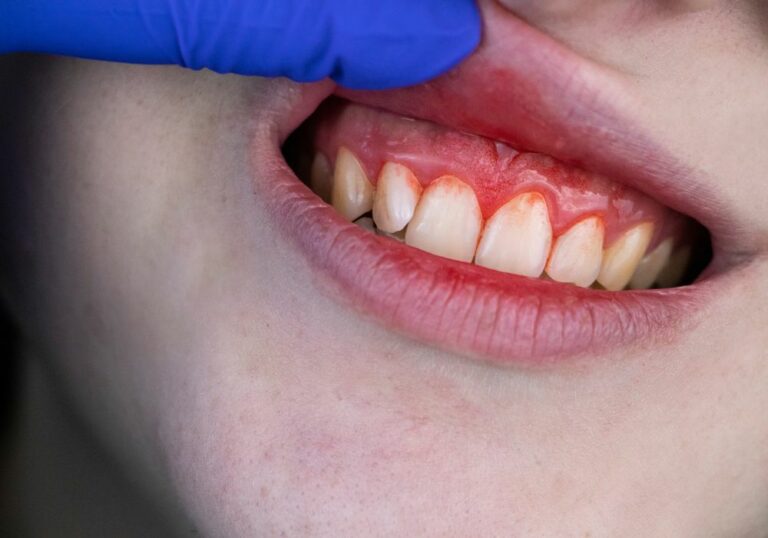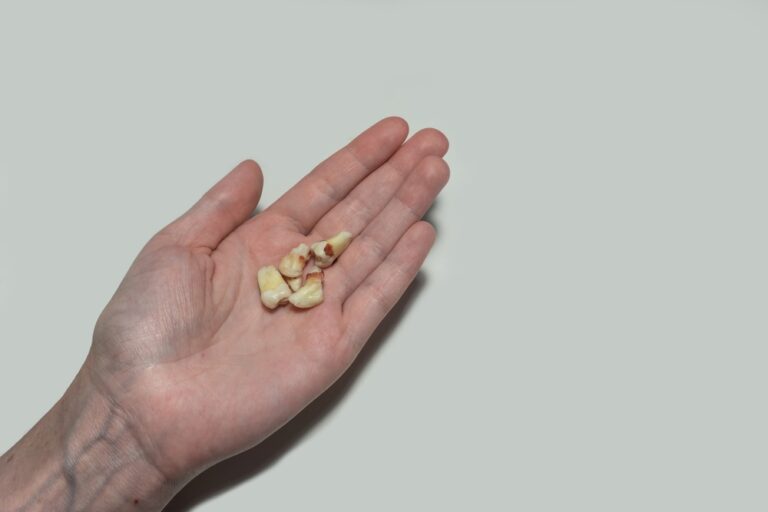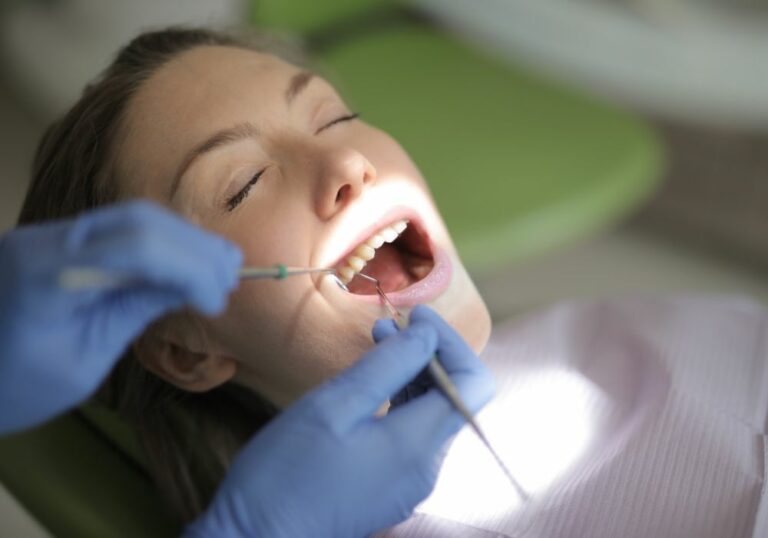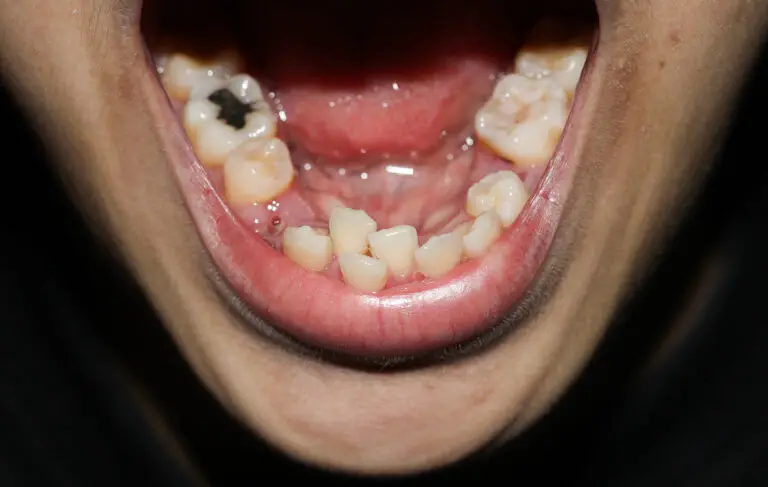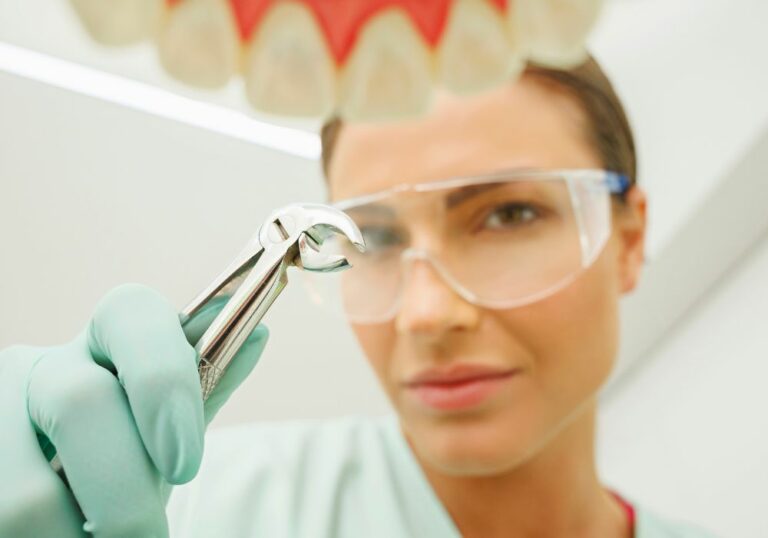Getting dental implants can be a great way to replace missing teeth and restore your smile. However, over time porcelain implant crowns can become stained and discolored just like natural teeth. Luckily, there are ways to safely whiten implant teeth to help them better match the shade of your natural teeth.
While natural teeth have a living internal structure that allows whitening agents to penetrate the enamel and dentin, implant crowns are made from inert materials that do not respond the same way. This means that traditional at-home whitening strips and trays will not effectively whiten implant crowns. Specialized methods are required to whiten the surface of implant crowns without damaging the materials. When done correctly and conservatively, you can safely brighten the appearance of implant teeth. Discuss options with your dentist and use caution to find the ideal solution for your dental work.
Professional Whitening From Your Dentist
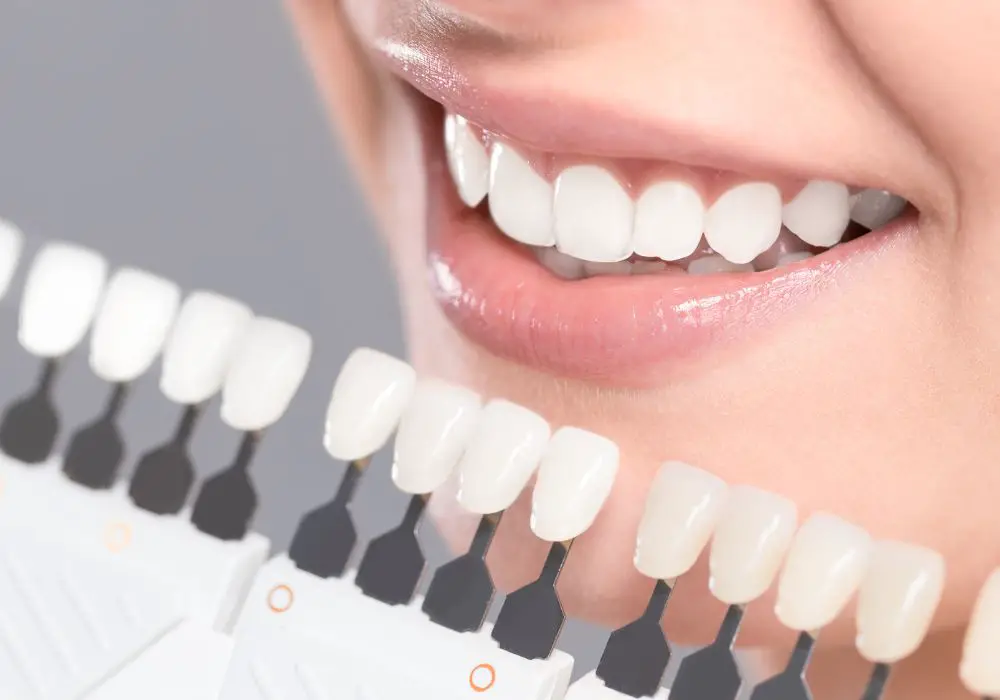
The most effective way to whiten implant crowns is through professional in-office whitening treatments performed by your dentist. This allows for the use of higher concentration whitening gels along with specialized techniques to focus on lightening the implant teeth.
During an in-office visit, your dentist will first thoroughly examine your mouth to evaluate your implants, crowns and gums. They will assess the type and location of your implants, as well as the materials used for the crowns. Your dentist will also check for any signs of gum recession or sensitivity that could impact whitening treatment.
Custom-fitted trays will be made to hold the whitening gel next to the implant crowns during treatment sessions. Your dentist will take impressions or scans of your teeth, which are then used to fabricate thin, clear plastic trays that fit precisely over your implant crowns and natural teeth. This allows the whitening gel to be isolated only to the crown surfaces needing lightening.
A hydrogen peroxide-based whitening gel, typically between 15-40% concentration, will be precisely applied to the crowns. A higher concentration of hydrogen peroxide than found in over-the-counter kits is used to effectively penetrate the inert implant crown material and lift stains from the surface. Your dentist will use methods such as light activation or warmers to accelerate and enhance the whitening process. Light accelerates the breakdown of the peroxide while warmers help speed molecular activity.
Each in-office session generally takes 30-60 minutes, with patients seeing results after 1-3 visits spaced out over days or weeks. During each appointment, your dentist will reapply fresh gel to maximize the whitening effects. Most patients achieve significant brightening and lightening of implant discoloration after completing the recommended treatment series.
In-office whitening is considered the gold standard for whitening dental implants because it allows the highest concentration of whitening gel to be used safely and effectively under professional supervision. However, this method can be more costly than at-home options.
In-Office Whitening Considerations:
- Achieves fastest, most dramatic whitening results in 1-3 visits
- Allows high-concentration 15-40% hydrogen peroxide gels
- Custom fitted trays target gel precisely to implant crowns
- Enhances results with light activation and/or heat application
- Costs between $300-$600 per treatment series
- May require periodic repeat touch-ups over time
At-Home Whitening Options for Implants
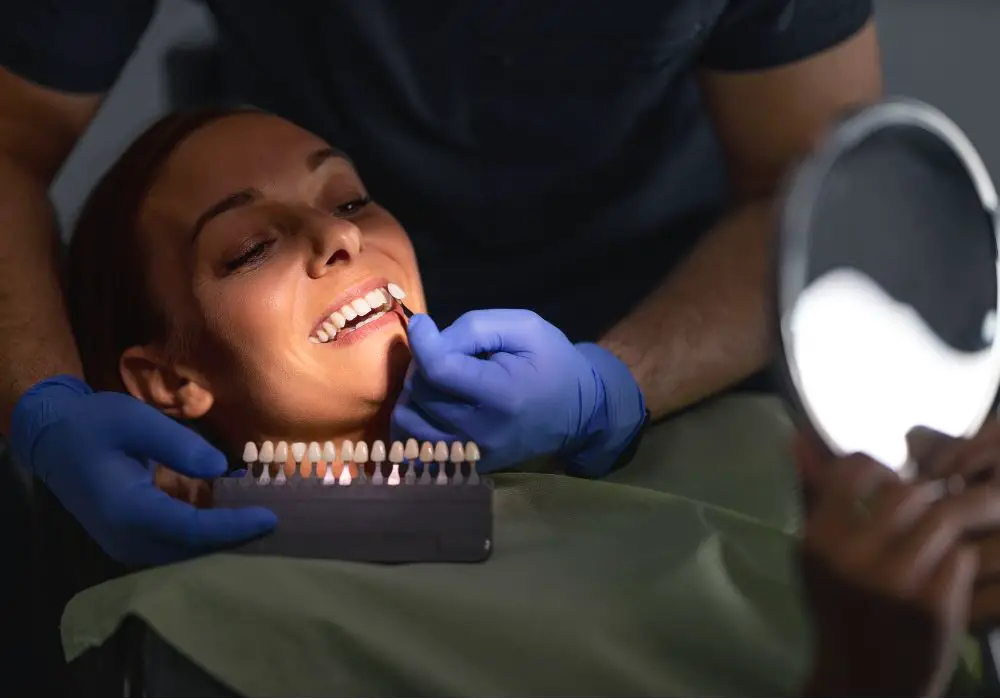
While in-office whitening is the most effective choice, there are also at-home options that can help maintain brightness between professional treatments. These include specialized whitening toothpastes, whitening rinses, and custom take-home trays from your dentist.
Whitening Toothpastes
Specialized whitening toothpastes can help remove minor surface stains from implant crowns over time through gentle polishing and abrasion. Look for varieties that contain mild abrasives such as silicas or baking soda along with low concentrations of hydrogen peroxide for polishing and bleaching of the crown material.
Use a soft or extra-soft toothbrush and take care not to scrub aggressively, as this could damage the implant. The crown surface can be worn down over time with overly vigorous brushing. Focus on thorough and consistent brushing twice a day. Gel toothpastes may adhere better to the crown surface than regular pastes.
Whitening toothpaste results will be more gradual but can help supplement professional whitening or maintain brightness between appointments. Use for 2-4 weeks to see noticeable changes in staining or discoloration of implant crowns. Ask your dentist for recommended whitening toothpaste products.
Whitening Rinses
Whitening mouthwashes can also help reduce staining of implant crowns with consistent daily or weekly use. Many contain low-levels of hydrogen peroxide or other agents such as sodium hexametaphosphate that work to oxidize and lift stains from the crown surface without altering the color of the base material.
Swish the whitening rinse vigorously around all surfaces of the implant crowns according to product instructions. Letting it sit on the crowns for the recommended time allows the active agents to penetrate and dissolve staining buildup. Using whitening rinses along with toothpastes and professional treatments can help prolong a brightened smile.
At-Home Whitening Trays
Custom-fitted whitening trays made by your dentist allow the use of lower concentration whitening gels directly on the implant teeth at home. This can help maintain professional whitening results between office visits.
The dentist will take impressions of your teeth and make thin, clear plastic trays that fit precisely over the implant crowns as well as natural teeth. A lower concentration hydrogen peroxide gel, often 10-15%, is provided to use with the trays. The custom fit helps isolate the gel to just the crown surfaces.
The gel is placed into the tray reservoirs before inserting in the mouth for 30 mins to an hour per session. At-home trays should only be filled halfway with gel to avoid excess coming in contact with gums, as this could cause irritation. Carefully follow your dentist’s usage instructions for frequency and duration of wear.
At-Home Considerations:
- Provides gradual lightening over weeks with daily consistent use
- Less risk of sensitivity compared to professional treatment
- More affordable maintenance option at $100-$300
- Takes weeks to see noticeable change
- Primarily maintains, doesn’t dramatically whiten
Lifestyle Changes That Prevent Implant Staining
In addition to active whitening methods, making certain lifestyle adjustments can help prevent new stains from forming on your implant crowns.
Stop Smoking
Smoking is one of the most common causes of dental stains, as it allows tar and other chemicals to penetrate the porous crown material. Quitting smoking will prevent the accumulation of brownish stains over time for whiter implant teeth. Talk to your doctor about smoking cessation programs and products if you need help quitting.
Drink Less Staining Beverages
Coffee, tea, red wine and soda contain pigments that can penetrate and permanently discolor the surface of your implant crowns over time. Limit consumption of these drinks and avoid prolonged contact with teeth by drinking through a straw. Rinsing with water after consumption can also help reduce staining.
Improve Oral Hygiene
Allowing staining plaque to build up on implant crowns leads to mineralization and tartar deposits that can darken their appearance. Consistent and thorough brushing and flossing twice daily keeps crowns cleaner. Use a soft brush and non-abrasive whitening toothpaste. Also, clean between crowns with interdental brushes or floss at least once daily.
Get Professional Cleanings
See your dentist for cleanings and polishings every six months to remove hardened extrinsic stains and prevent future discoloration of implants. Ultrasonic scaling can clean staining buildup from crown surfaces, while polishing compounds help restore surface smoothness and brightness.
Making these simple lifestyle adjustments will optimize the results of professional whitening treatments and help keep your implant crowns whiter longer between sessions. The cleaner you can keep the crown surfaces, the less staining will occur.
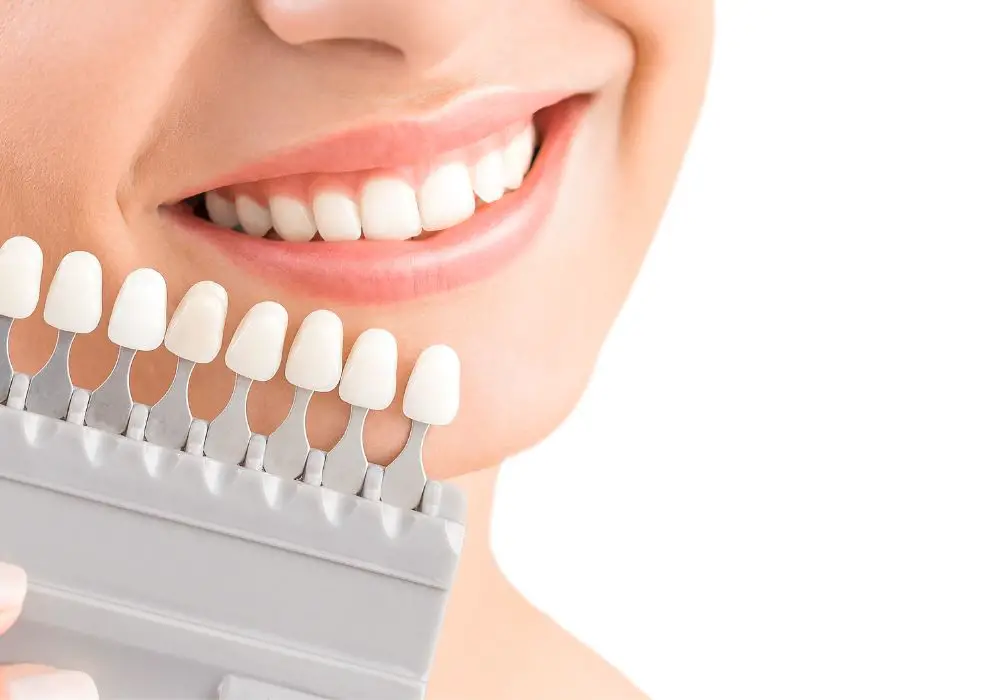
Common Questions About Whitening Implant Teeth
Can all types of dental implants be whitened?
Most implant crowns and veneers made from porcelain, ceramic, composite resin or zirconia can be effectively whitened. Pure metallic crowns like gold cannot be lightened. Titanium implant posts also do not change color but are hidden by the crowns. Ask your dentist about the specific crown materials used if unsure.
Does insurance cover implant whitening?
Unfortunately, dental insurance usually does not cover the cost of professional or at-home whitening because it is considered a cosmetic treatment rather than medically necessary. However, some dental savings plans provide discounts on certain whitening services through participating dentists. Out-of-pocket payment is typically required.
Is whitening bad for dental implants?
Whitening is safe for most implant crowns when following your dentist’s recommendations and using non-abrasive products. However, using very strong peroxide gels without guidance or excessive brushing could potentially damage the crown surface over time, so caution is needed.
How long do whitening results last?
With professional in-office whitening, dramatic results can last 1-3 years. Using custom take-home whitening trays or touch-up whitening rinses occasionally can help prolong your bright smile. Avoiding staining food, drinks and tobacco will also keep crowns whiter longer.
Can natural teeth be whitened at the same time as implants?
Yes, natural teeth can be safely whitened along with implants using custom trays or professional methods, providing uniform brightening. Normally the same products are used on both but your dentist may recommend different concentrations of peroxide for natural teeth versus implants.
Conclusion
While implant crowns do not whiten like natural teeth, there are highly effective professional and at-home methods that can safely brighten their appearance. Working with your dentist to develop a customized whitening regimen based on your specific dental work will provide the best results. This includes both in-office treatments for dramatic whitening along with take-home options for maintenance between sessions. Avoiding staining habits and keeping implant crowns clean are also important. With the right approach, you can enjoy beautifully brighter implant teeth for an improved smile.

